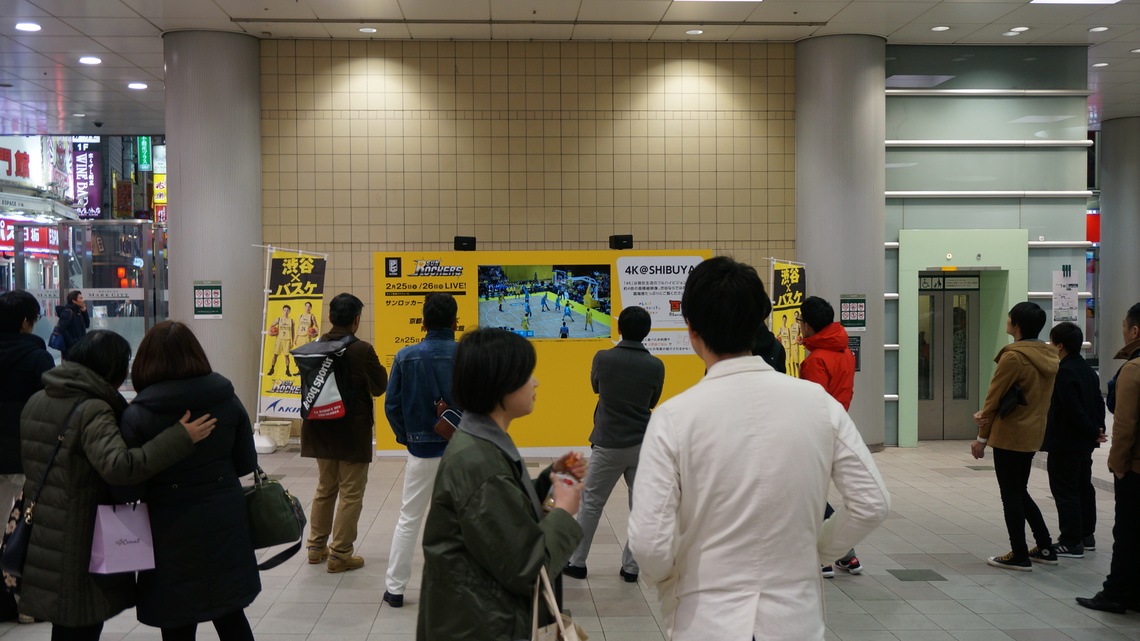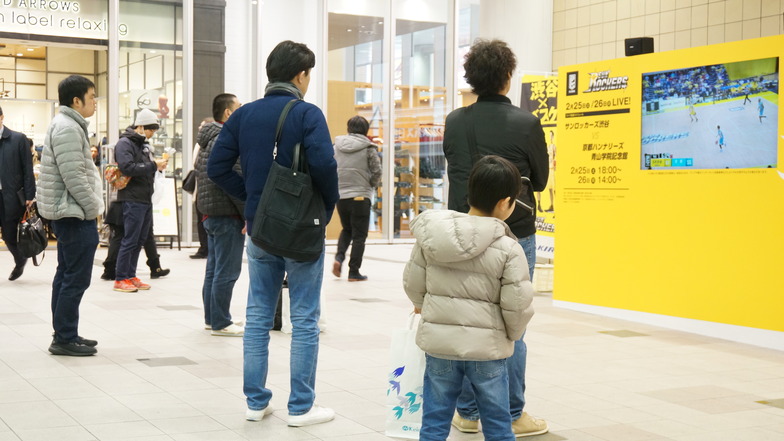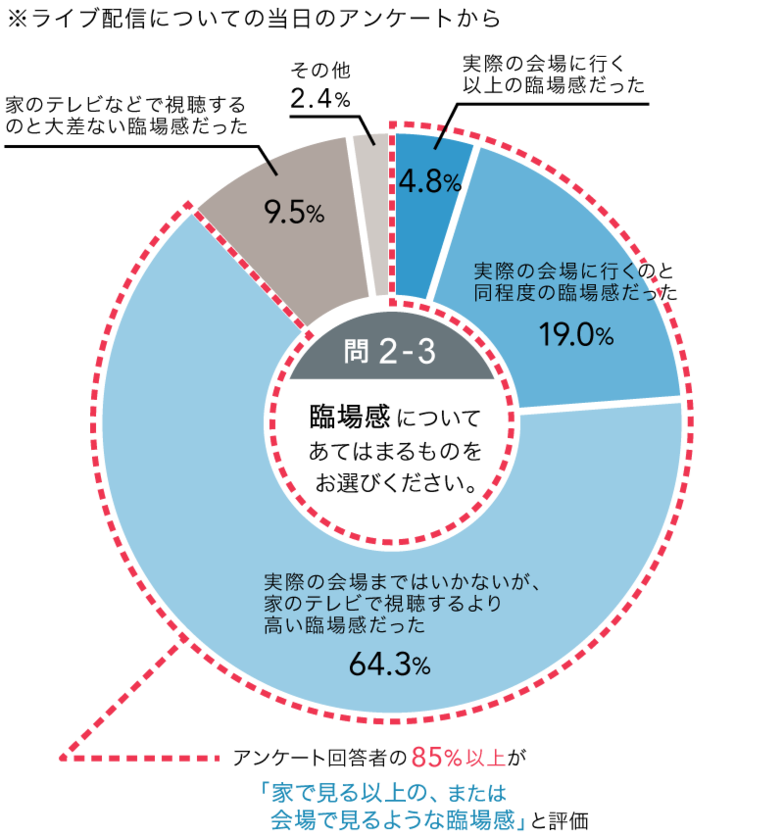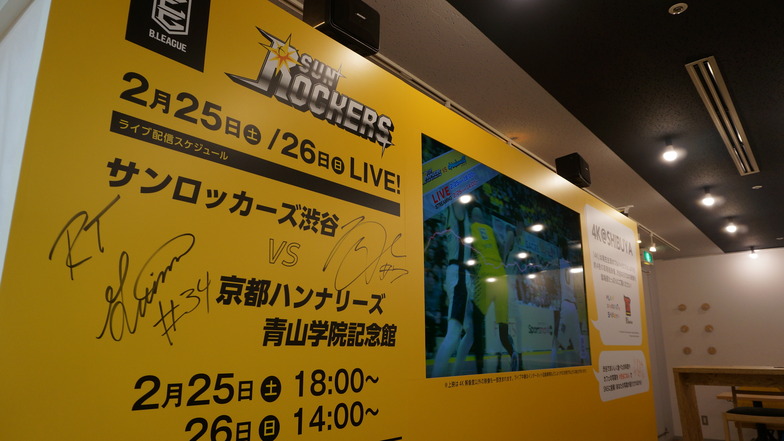Note: This website was automatically translated, so some terms or nuances may not be completely accurate.
How will "4K video" transform the world? Field testing in Shibuya!
Next-generation high-definition picture quality: "4K/8K." Compared to the current mainstream high-definition, 4K offers four times the pixel density and 8K offers sixteen times the pixel density for image expression.
Projections indicate that by 2020, the penetration rate of 4K-compatible TVs in the domestic smart TV market will expand to 70.5% (February 2016, Japan Electronics and Information Technology Industries Association). This suggests that the trend toward higher image definition will continue to advance.
I, too, am one who looks forward to the spread of 4K.
The spread of 4K isn't limited to televisions. It will likely be introduced into various screens, such as public displays around town. Against this backdrop, Dentsu Inc. and Dentsu International Information Services conducted a 4K digital signage proof-of-concept experiment, " 4K@SHIBUYA," at Shibuya Mark City in Tokyo from February 24 to 26.

Is "Current Picture Quality is Good Enough" Just a Misconception?
High definition conveys the information of "realism"
During this experiment, 4K digital signage displayed footage of Shibuya's tourist spots and shops. On the 25th and 26th, it also live-streamed 4K footage of a league game featuring the Sunrockers Shibuya, a professional basketball B.LEAGUE team based in Shibuya Ward, directly from the Aoyama Gakuin Memorial Gymnasium, the game venue.
The video streaming proceeded smoothly on the day. The high-definition 4K footage stopped passersby in their tracks, and we believe they enjoyed it. Using network technology to project 4K game footage within the space of existing facilities presented various challenges and discoveries, yielding significant results.
That said, some readers might be skeptical about whether 4K will truly catch on. You might even think, "The current picture quality is good enough."
However, looking back at past video innovations, I feel that "current quality is sufficient" might be a misconception. For example, when mobile phone displays transitioned from monochrome to color, or when television shifted from analog terrestrial broadcasts to digital terrestrial broadcasting, there were voices saying, "We don't need that," or "The current state is sufficient." Yet, now that we've grown accustomed to these environments, I don't think many people would willingly want to revert to the past.
This experiment also revealed something about 4K's potential. Compared to when we played edited footage like live event announcements or cityscapes, the moment the live basketball game started, more people stopped in front of the signage and showed interest. It seems the combination of "high-definition 4K video" and "live broadcast" creates something that unconsciously captures people's attention.

That "something that sticks" is "the feeling of being there. "

In a survey conducted during the field test, over 85% of viewers rated the 4K footage as providing "a sense of presence greater than watching at home, or akin to being at the venue." As the pixel density of the image increases, it creates an illusion almost like seeing the real thing with your own eyes. In other words, high-definition video adds the previously hard-to-convey information of the "atmosphere of the scene."
Just like past video innovations, once you experience 4K's high quality and realism, you won't want to go back to a quarter of the density. As 4K/8K video sources become more widespread, I believe high definition will permeate every kind of display.
High definition will generate new content,
creating new revenue streams
So, what specific possibilities will the spread of 4K open up?
In advertising expression, we've traditionally relied on photos and videos to convey information and stories. However, with high-definition 4K footage, simply showing the product can communicate its "texture" and "atmosphere." By featuring footage shot under the most flattering lighting, you can create a sizzle effect, as if the product's display window had teleported right there. Clients benefiting from this will be diverse, including luxury brands and food/beverage companies.
In other words, 4K video enables a different dimension of brand marketing—one that stirs emotions through visual beauty and atmosphere—separate from buzz or viral videos that rely heavily on storytelling and production. This effect is particularly pronounced on large screens, making 4K-enabled TV commercials and digital signage boards highly effective.
Additionally, this proof-of-concept experiment featured "live basketball streaming" on digital signage. In the US and Europe, remote live viewing of concerts and stage performances is already growing as a show business model. Enabling public or live viewing of high-definition video through transmission opens new business opportunities.
Live viewing has broad applications: "Cheering on sports finals with fans nationwide," "Enjoying overseas artists' performances in domestic halls," or "Displaying museum collection pieces not publicly exhibited with tactile realism." Showing powerful images on larger displays can increase audience numbers and satisfaction. This brings new revenue streams to live event promoters and content providers.

And another point: We believe connecting digital signage to a "network" holds significant value. This enables real-time ad delivery tailored to the date, time, event, local weather, and environmental changes—using the same methods as web-based targeted advertising. It's like weaving an ad network throughout the city. High-definition digital signage can be used more effectively as urban advertising.
Precisely because 4K/8K holds such high potential,
the right content and understanding
Over the next few years, 4K's share will undoubtedly expand in both software and hardware. The crucial question is what kind of content can be created that leverages its unique characteristics. Precisely because it's high-definition, there's a risk it can look "cheap" if handled incorrectly. 4K has its own characteristics, as does 8K. Creative production ideas that differ from conventional methods, along with cultivated know-how and content acquisition capabilities, will be key.
We at Dentsu Inc. believe our role is to identify what content is best suited for high-definition displays and increase the number of showcases utilizing 4K/8K. This should help guide and expand the high-definition market correctly.
Equally important is increasing the "places" where high-definition content is utilized. Adopting high-definition displays imposes financial burdens on facilities and comes with equipment constraints. Therefore, unless we communicate the true value of 4K and 8K and gain acceptance, the market scale cannot expand.
Our role is to help facilities, clients, and content providers understand the "shift in value" brought by high-definition expression. Doing so will surely lead to the emergence of unprecedented advertising expressions and content.
High-definition image quality holds immense potential, and this proof-of-concept experiment is a step toward that future.
■Experiment Name: "4K@SHIBUYA" (High-Definition Digital Signage Distribution Experiment)
■Organizers: Advanced Video Distribution Organization, Dentsu Inc., Dentsu International Information Services
■Period: February 24 (Fri) - 26 (Sun), 2017
■Location: Shibuya Mark City 1F Event Space & 4F COIN SPACE by Shibuya City Tourism Association
※B.LEAGUE "Sunrockers Shibuya" vs. "Kyoto Hannaryz"
Live broadcast: February 25 from 6:00 PM until game end; February 26 from 2:00 PM until game end
■Content Providers: B.LEAGUE, Sunrockers Shibuya, NHK Enterprises, Inc., Shibuya no Radio, RUTRON, Shibuya City Tourism Association, and others
※Implemented as part of the FY2016 Ministry of Internal Affairs and Communications demonstration project "Contract for Research and Development Toward Realizing Advanced Video Streaming Services."
Was this article helpful?
Newsletter registration is here
We select and publish important news every day
For inquiries about this article
Author

Kensuke Takagi
Dentsu Digital Inc.
Advertising Business Planning Department
Joined Dentsu Inc. in 2008. Born in Kobe City. Since joining the company, has been responsible for the media domain based on new platforms, services, and next-generation technologies. Leveraging experience in creating showcases that unlocked the media potential of platforms like YouTube and Twitter during their initial entry into Japan, now oversees the growth of social media platforms like Pinterest entering Japan from overseas. A self-proclaimed gadget enthusiast.